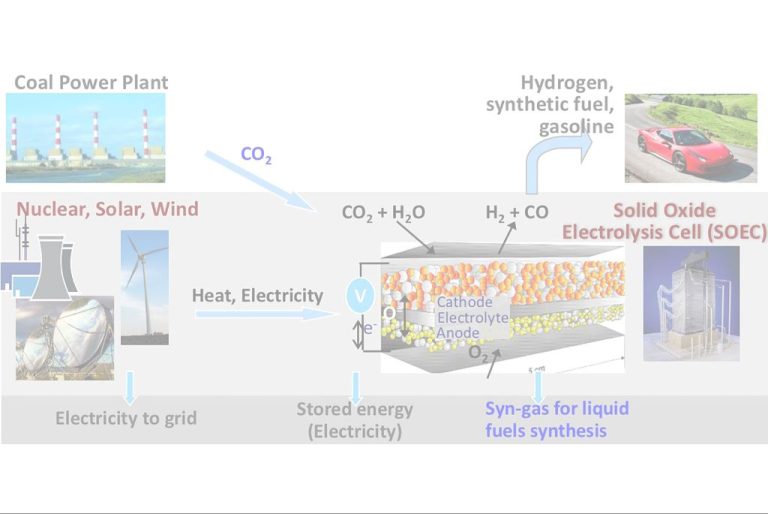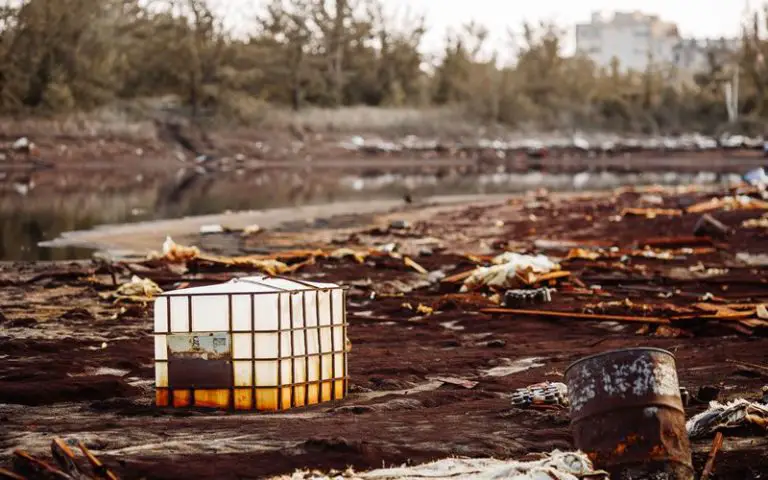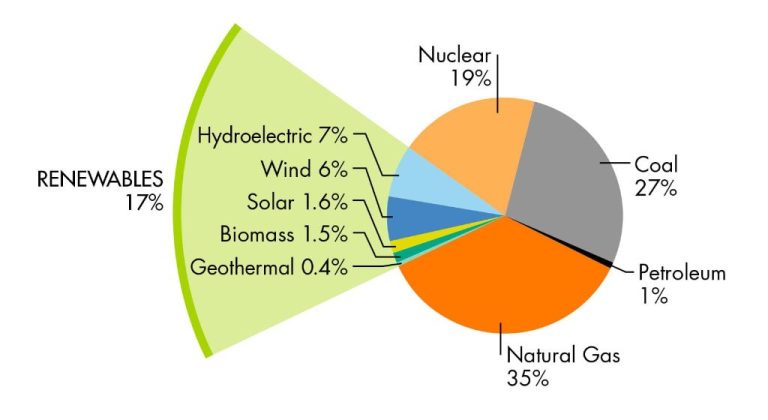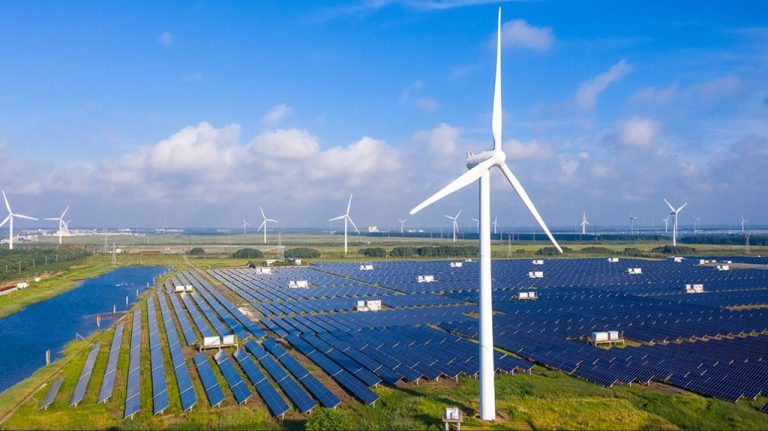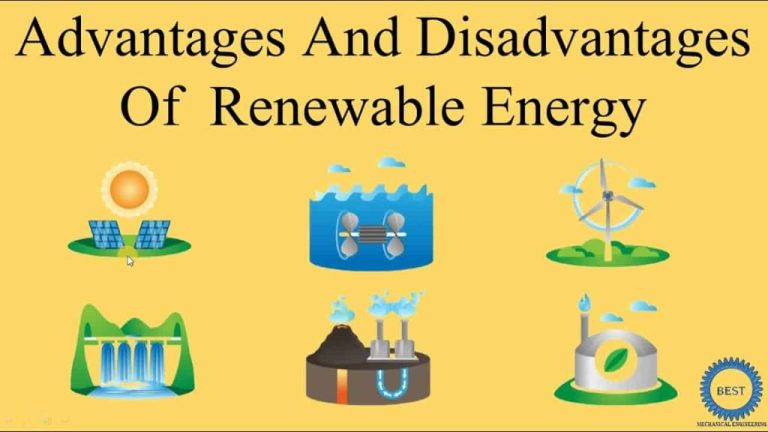How Much Of Us Energy Is Nuclear?
Nuclear power has been an important part of the US energy mix for decades, providing a steady and stable baseload source of electricity. However, nuclear’s share of total US electricity generation has declined in recent years as cheap natural gas and the rise of renewable energy sources like wind and solar have reshaped America’s energy landscape. Today, nuclear energy faces an uncertain future in the US, with aging plants being retired but new projects also still being proposed and built. Understanding nuclear power’s current role and analyzing where it may be headed next remains an important topic given nuclear’s status as America’s largest source of low-carbon energy.
Brief History of Nuclear Energy in the US
Nuclear energy was first developed in the United States during World War II with the top-secret Manhattan Project from 1942-1946, which resulted in the creation of the first atomic bombs (https://www.energy.gov/ne/history).
In 1946, the first nuclear reactor designed to generate electricity was activated at the National Reactor Testing Station in Idaho. This experimental reactor was called the Experimental Breeder Reactor I (https://ecommons.udayton.edu/phl_fac_pub/11/).
Commercial nuclear power then expanded in the 1950s and 1960s, with the first commercial nuclear power plant opening in Shippingport, Pennsylvania in 1957 (https://s21.q4cdn.com/920789611/files/download_library/Educational/Nuclear_Basics/Nuclear-Basics-History-of-Nuclear-Power.pdf). Through the 1970s and 1980s, growth continued as more plants were constructed to meet rising electricity demand.
Today, nuclear power provides about 20% of electricity in the US, though growth has leveled off since the 1980s due to factors like high costs and public opposition (https://s21.q4cdn.com/920789611/files/download_library/Educational/Nuclear_Basics/Nuclear-Basics-History-of-Nuclear-Power.pdf). Key events established nuclear energy as a major electricity source, even as expansion has slowed.
Current Share of Nuclear Power
According to the U.S. Energy Information Administration, as of 2022 nuclear energy accounted for roughly 18.2 percent of the United States’ electricity generation [1], which is the lowest percentage recorded in over three decades. This represents a steady decline over the past 10 years, down from around 20% in 2010. In comparison, natural gas now accounts for the largest share at 40%, while renewables like solar, wind, hydro and biomass provide around 21%. The remaining 20% comes from a mix of coal and petroleum.
Nuclear power has gone from providing the largest single source of US electricity in the 1990s, to now being surpassed by natural gas. Cost and safety concerns around nuclear plants, combined with the rise of cheap shale gas and government subsidies for renewable energy, have led to this shift away from nuclear. However, it remains a key baseload source and still generates nearly one-fifth of all US electricity.
Number and Location of Plants
As of 2022, there are 55 commercially operating nuclear power plants with 93 nuclear reactors in 28 U.S. states, according to the Nuclear Energy Institute (NEI). This accounts for about 20% of the total electricity generated in the U.S. [1]
The states with the most operational nuclear power reactors are Illinois with 11, Pennsylvania with 9, South Carolina with 7, and Florida with 5. Other states housing nuclear plants include New York, New Jersey, Alabama, Tennessee, Louisiana, Arkansas, Georgia, Virginia, Maryland, Connecticut, Massachusetts, New Hampshire, Ohio, Michigan, Minnesota, Nebraska, Missouri, Kansas, Texas, Arizona, California, and Washington. [2]
The majority of nuclear reactors currently operating were built between 1970 and 1990. Construction of new reactors slowed down substantially after 1990 due to factors like high costs and public opposition. Only a handful of new reactors have come online since 2000, though several new units are planned or currently under construction. [3]
Cost of Nuclear Power
The cost of nuclear power is often measured in levelized cost per kilowatt-hour (kWh) to compare it with other energy sources. According to the U.S. Energy Information Administration, the estimated levelized cost per kWh of new nuclear power plants going online in 2022 is $96.10 (EIA 2022). This is much higher than new natural gas combined cycle plants ($44.10 per kWh) or onshore wind farms ($26.60 per kWh). However, it is competitive with solar thermal power ($97.70 per kWh) and lower than offshore wind farms ($115.20 per kWh) (EIA 2022).
So while nuclear is more expensive than conventional fossil fuel plants, it is cost competitive with many renewable energy sources. Much of the high capital costs for nuclear come from construction of the plants themselves and meeting stringent safety requirements. However, nuclear benefits from relatively low fuel costs compared to fossil fuels and high capacity factors (the plant’s actual production over a period of time compared to maximum possible production).
Sources:
Safety and Environmental Impact
The safety record of US nuclear power plants has generally been good over the decades they have been operating. According to the Nuclear Regulatory Commission (NRC), the government agency that oversees the nation’s nuclear reactors, there have only been three major nuclear accidents in the history of US commercial nuclear power: Three Mile Island in 1979, Davis-Besse in 2002, and Browns Ferry in 1975. While these resulted in core damage, there were no radiation-related injuries or deaths. Safety systems generally performed as expected during these events.
The NRC has extensive regulations and oversight in place to ensure safe operation of nuclear reactors. All commercial nuclear power plants have redundant safety systems and undergo rigorous testing and inspection. They are designed with robust containment structures to prevent radiation release. Operators are highly trained and must follow strict procedures. The NRC evaluates all aspects of design, construction, operation, and emergency preparedness.
That said, many environmental and safety advocacy groups argue that nuclear power can never be 100% safe. The consequences of an accident could potentially be severe. There are concerns that safety culture has declined in recent decades. Critics point out issues that have occurred at some plants, and argue the NRC needs to enforce standards even more strictly. There is continued debate around improving safety.
In terms of environmental impact, nuclear waste disposal remains a challenging issue. Highly radioactive spent fuel must be securely isolated for thousands of years. The US still does not have a permanent repository for nuclear waste, though Yucca Mountain in Nevada had been proposed. Most waste is currently stored on-site at reactor facilities. Environmentalists are concerned about the risks if storage containment fails over long time periods.
Nuclear advocates argue that new reactor designs and waste disposal solutions can address these concerns. They also point out that nuclear energy has virtually zero emissions of pollutants like particulates, sulfur dioxide, nitrogen oxides or greenhouse gases. Overall, the environmental effects of nuclear power remain hotly debated. Strict oversight and safety culture are essential to ensure risks are minimized.
[cite source=”https://www.state.gov/european-atomic-energy-community-euratom-22-210-extension-of-arrangement-for-the-exchange-of-technical-information-and-cooperation-in-nuclear-safety-matters-as-extended/22-210-euratom-nuclear-energy-safety/”]
Future Outlook
According to a recent report from the Federation of American Scientists, the future of nuclear power in the United States is uncertain The Future of Nuclear Power in the United States. While some supporters argue nuclear power is essential for meeting future energy needs and climate goals, opponents raise concerns about costs, safety, and nuclear waste disposal.
On one hand, the political climate has become more supportive of nuclear power in recent years. Both the Obama and Trump administrations provided subsidies and incentives for existing plants. However, very few new reactors are currently planned due to high construction costs. Only two new reactors are under construction, both at the Vogtle plant in Georgia.
New advanced reactor designs like small modular reactors may change the economics. These smaller, simpler reactors promise to be safer and cheaper to build. But they require further research and development. It remains uncertain if these designs will enable a widespread expansion of nuclear power.
Overall, the future depends heavily on policies and economic factors. With the right political will and financial incentives, nuclear could see renewed growth. But under current conditions, a major expansion seems unlikely. The share of US electricity from nuclear will probably remain close to 20% in the coming decades.
Opposing Views
There are several arguments commonly made against increasing the use of nuclear power in the US:
One concern is around the risk of accidents. Major incidents like Chernobyl or Fukushima have led some to argue that nuclear power comes with catastrophic risks if something goes wrong (Vienna Nuclear Protection Commissioner). However, proponents argue modern plants have much better safeguards.
Another argument involves concerns around nuclear waste. There is no permanent disposal site for radioactive nuclear waste in the US. Critics argue there are unsolved challenges and environmental risks associated with long-term nuclear waste storage (Let’s Talk Science).
There are also disputes around the costs of nuclear power. While nuclear plants are expensive to build, they can provide inexpensive electricity over the long term. But cost overruns are common for new plants. Some argue the high upfront costs make it uneconomical compared to alternatives like natural gas or renewables.
In summary, the main opposing arguments involve safety risks, nuclear waste disposal challenges, and high costs relative to alternatives. Concerns persist about the environmental and health impacts of nuclear accidents and radiation exposure.
Conclusion
In summary, nuclear energy currently provides around 20% of the total electricity in the United States from nearly 100 operational reactors across 30 states. While nuclear power does not emit greenhouse gases, it does come with risks such as radioactive waste and safety concerns that require proper management and oversight. The costs of nuclear are also high compared to some other sources of energy.
Going forward, nuclear will likely continue to play an important but declining role in the US energy mix as existing plants retire and are not fully replaced. More reactors are being decommissioned than built as cheaper natural gas and renewable energy sources gain favor. However, nuclear advocates point to nuclear’s reliability and role in achieving zero-emissions goals. The future of nuclear power will depend on policies, economics, improving designs, and public sentiment.
References
Energy Information Administration. (2022). Nuclear explained: U.S. nuclear industry. Retrieved from https://www.eia.gov/energyexplained/nuclear/us-nuclear-industry.php
Nuclear Energy Institute. (2022). Nuclear by the numbers. Retrieved from https://www.nei.org/fundamentals/nuclear-by-the-numbers
World Nuclear Association. (2022). Nuclear power in the USA. Retrieved from https://www.world-nuclear.org/information-library/country-profiles/countries-t-z/usa-nuclear-power.aspx
Environmental Protection Agency. (2022). Sources of greenhouse gas emissions. Retrieved from https://www.epa.gov/ghgemissions/sources-greenhouse-gas-emissions

